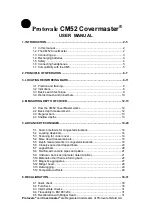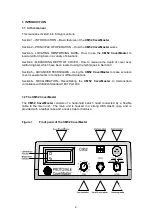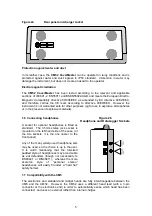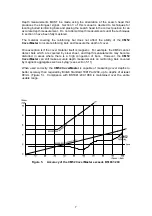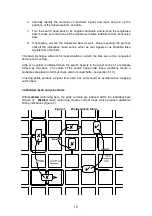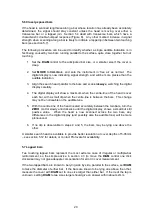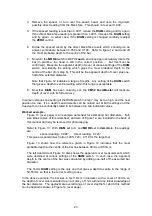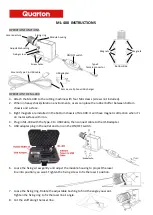
9
Practice how to place the centre-line of the search head exactly over the centre-line of the
bar. Use the audible tone to locate the bar, and the digital display for fine adjustment.
To maximize the signal, move the search head from side to side, and also rotate it
slightly.
When practising the techniques described in the rest of this section, hold the
black
face
of the search head closest to the bars (see sections 4 and 5 for uses of the white face).
3.3 Basic search technique
The objective is to find each reinforcing bar and align the search head parallel to it, with
its flat face centered over the bar.
1. Judge which way most of the reinforcing bars will run - generally along the
greatest length of the reinforced section.
2. With the search head held parallel to the main run of the bars,
slowly
scan the
head sideways to locate those ‘lengthwise’ bars (figure 6:1). The audible
indicator will ‘sound’ each time it passes over a bar.
3. Find the position of exact maximum signal by listening for the highest-pitched
tone, looking for the maximum rightwards deflection of the analogue meter, and
looking for the highest reading on the digital display.
4. Each time the head passes over a bar, find the exact maximum and use chalk to
mark each end of the centre-line of the search head. The chalk marks should
clearly show where each bar runs. Join up the marks to indicate the position of
the bars.
5. Now turn the search head through 90 degrees to search for ‘transverse’ bars (if
any). Scan mid-way between the known positions of the lengthwise bars (Figure
6:2). The levels of maximum signal will usually be different from those for the
lengthwise bars, because the transverse bars will be at a different depth and also
possibly of a different diameter.
Figure 6 Systematic Location of bars



